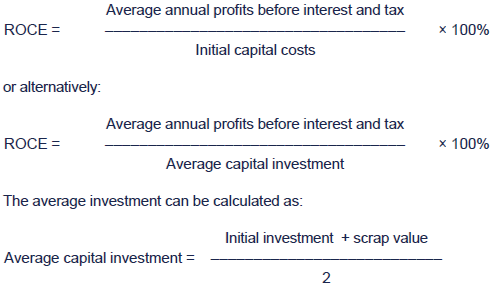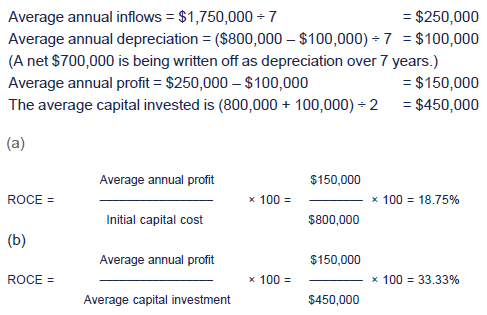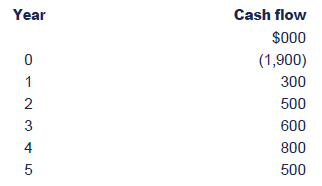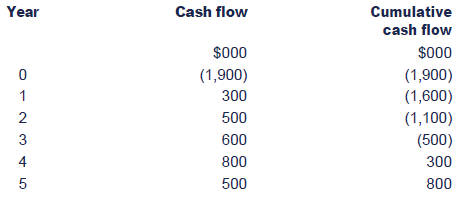Basic investment appraisal techniques
What is investment appraisal?
Before committing to high levels of capital spend, companies normally undertake investment appraisal.
Investment appraisal has the following features:
When a proposed capital project is evaluated, the costs and benefits of the project should be evaluated over its foreseeable life.This is usually the expected useful life of the non-current asset to be purchased, which will be several years. This means that estimates of future costs and benefits call for long-term forecasting.
A 'typical' capital project involves an immediate purchase of a non-current asset. The asset is then used for a number of years, during which it is used to increase sales revenue or to achieve savings in operating costs. There will also be running costs for the asset. At the end of the asset's commercially useful life, it might have a 'residual value'. For example, it might be sold for scrap or in a second-hand market. (Items such as motor vehicles and printing machines often have a significant residual value.)
A problem with long-term forecasting of revenues, savings and costs is that forecasts can be inaccurate. However, although it is extremely difficult to produce reliable forecasts, every effort should be made to make them as reliable as possible.
A business should try to avoid spending money on non-current assets on the basis of wildly optimistic and unrealistic forecasts.
The assumptions on which the forecasts are based should be stated clearly. If the assumptions are clear, the forecasts can be assessed for reasonableness by the individuals who are asked to authorise the spending.

Two basic appraisal techniques covered here are Return on Capital Employed (ROCE) and Payback.
There are other more sophisticated methods of investment appraisal such as Net Present Value (NPV) and Internal Rate of Return (IRR).
Accounting profits and cash flows
In capital investment appraisal it is more appropriate to evaluate future cash flows than accounting profits, because:
Return on Capital Employed (ROCE)
ROCE is also known as accounting rate of return (ARR).
Formula
The formula for calculating ROCE is:

The initial capital cost could comprise any or all of the following:
Decision rule
The decision rule for ROCE is:
If the expected ROCE for the investment is greater than the target or hurdle rate (as decided by management) then the project should be accepted.
Example using ROCE
A project requires an initial investment of $800,000 and then earns net cash inflows as follows:

In addition, at the end of the seven-year project the assets initially purchased will be sold for $100,000.
Required:
Determine the project's ROCE using:
(a)initial capital costs
(b)average capital investment.
Solution:

Advantages and disadvantages of ROCE
Advantages of ROCE as an investment appraisal technique include:
Disadvantages include:
no account is taken of project life
no account is taken of timing of cash flows
it varies depending on accounting policies
it may ignore working capital
it does not measure absolute gain
there is no definitive investment signal.
Payback
The payback period is the time a project will take to pay back the money spent on it. It is based on expected cash flows and provides a measure of liquidity.
Formula
Constant annual cash flows:

Uneven annual cash flows:
Where cash flows are uneven, payback is calculated by working out the cumulative cash flow over the life of the project.
Decision rule
When using Payback, the company must first set a target payback period.
Example using Payback
Constant annual cash flows
An expenditure of $2 million is expected to generate net cash inflows of $500,000 each year for the next seven years.
What is the payback period for the project?

Uneven annual cash flows
A project is expected to have the following cash flows:

What is the expected payback period?

Payback is between the end of Year 3 and the end of Year 4. This is the point at which the cumulative cash flow changes from being negative to positive. If we assume a constant rate of cash flow throughout the year, we could estimate that payback will be three years plus ($500/800) of Year 4. This is because the cumulative cash flow is minus $500 at the start of the year and the Year 4 cash flow would be $800. Therefore payback is after 3.625 years.
Advantages and disadvantage of Payback
Advantages include:
it favours quick return:
helps company growth
minimises risk
maximises liquidity
Disadvantages include:
it ignores returns after the payback period
it is subjective as it gives no definitive investment signal
it ignores project profitability.
|
Created at 9/5/2012 2:44 PM by System Account
(GMT) Greenwich Mean Time : Dublin, Edinburgh, Lisbon, London
|
Last modified at 11/1/2016 3:57 PM by System Account
(GMT) Greenwich Mean Time : Dublin, Edinburgh, Lisbon, London
|
|
|
|
 |
Rating
:
|
 Ratings & Comments
(Click the stars to rate the page) Ratings & Comments
(Click the stars to rate the page)
|
 |
Tags:
|
|
|
|
|